Introduction:
One of the regular problems faced by contractors and DIYers alike is maintaining a regular joint width . Even the best of us can find it tricky to ensure that the joints we create between adjacent paving units are all the same. For example, if we are aiming for a 10mm joint and relying solely on judging by eye, it's a certainty that some will be 8mm-ish and others will be 12mm-ish. This may not be super-critical to the overall pavement performance but, with certain types of paving, a regular, consistent joint width does have an important role in the aesthetics. Further, with some pavement jointing materials, there is a minimum joint width which must be met to ensure the jointing material performs as intended.
In previous times, we would often use off-cuts of plywood or other timber to create 'spacers' between the paving elements. These would be left sticking up out of the joint, presenting a wonderful trip hazard, until the jointing was underway at which point, they would be (or should be!) removed. Not only did this look amateurish, there were occasions when the wooden spacer was kicked over, or somehow fell over, and went into the open joint from where it was a tricky process to remove. On too many jobs, we saw lesser installers simply fill the empty joint leaving the fallen timber spacer in situ, where it would eventually rot away and leave a weakness-inducing void in the jointing material.
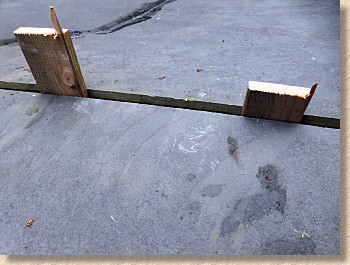
What was needed was some inert material that wouldn't compromise the joint integrity. Plastic seemed to be the answer, and many installers looked at the plastic packers used by window fitters. These are available in a wide range of sizes, from 1mm to 12mm or more, and in 1mm increments, which meant it was usually possible to use a single packer, or a combination of sizes to obtain the desired joint width.
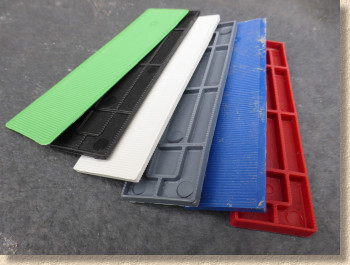
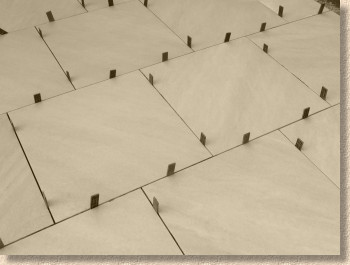
The Solution:
As with their timber predecessors, these plastic packers would be left upright, standing proud of the unfilled joints, presenting a trip hazard and often falling over and into the gap. Whereas the fallen timber 'spacers' would usually be teased out of the empty joint to avoid the "rot in-situ" problem, with plastic being inert and relatively cheap, the trapped packers are often left where they fall and jointed over. However, although they don't degrade in the same way as timber, the solid plastic prevents the essential jointing material from fully filling the space between paving elements, and so, once again, we have a potentially weakened joint.
What is needed is some form of spacer that won't compromise the joint in any way:
- It must be inert
- It must occupy minimal space within the joint and so not compromise the joint strength
- It must be cheap/economical
- It must be simple and easy to place
- It should be available in a range of widths and formats to suit various applications
So, somebody went away and had a good, long and hard think about this and eventually came up with GapFast Spacers .
These are specially designed plastic elements with a hollow structure that allows jointing material to flow into and all around the spacer, thereby maintaining joint strength and integrity. They cost pennies, and they come in a range of 'widths' to suit most popular applications. They even come in two standard formats, as Tees and as Crosses to best suit the laying pattern being used.
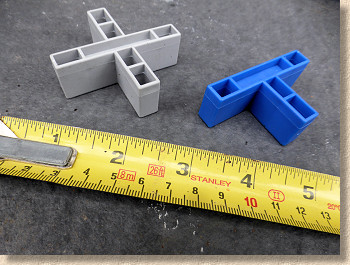
How to Use:
So simple to use, the GapFast Spacers are simply pushed into position against the previously laid paving before a new flagstone or paver is placed. The new paving unit is pushed tight against the GapFast Spacer and an accurate, consistent joint width is instantly created. No need to check with a tape measure; no need to have dangerous bits of plywood sticking up from the surface; no risk of compromising joint integrity. GapFast Spacers are the simple, straightforward solution to creating perfect joints.
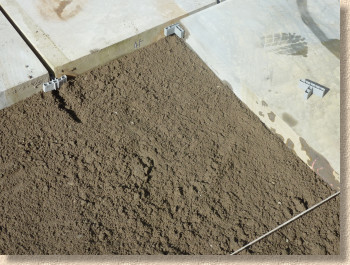
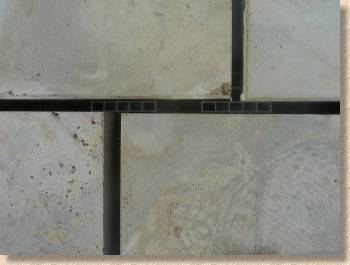
And no matter what pattern or layout is being used with the paving, GapFast Spacers can be used to ensure an even and consistent joint width, whther it's a random layout, stack bond or the usual stretcher bond.

Other Applications:
Although the main use for GapFast Spacers is with flagstone paving, be it concrete , porcelain or natural stone , they are also used when laying natural stone setts with sawn sides, and with both clay and concrete block pavers which are being rigidly laid (on a mortar bed with mortared joints). In fact, whenever a regular width joint is required, GapFast Spacers are the sensible choice.
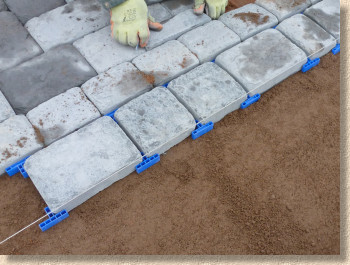
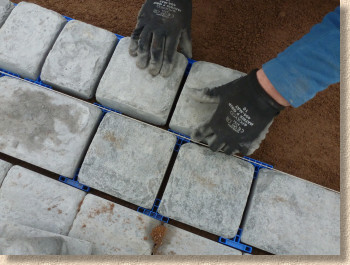
Although the standard GapFast Spacer is provided in the ever popular 10mm width, other widths can be ordered for specific projects, such as the 3mm spacers shown below which were cretaed for a job where very close, tight joints were required.
See also the SudsFlow Spacers for creating permeable pavements using conventional flags or block pavers.
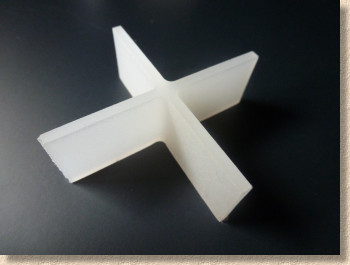
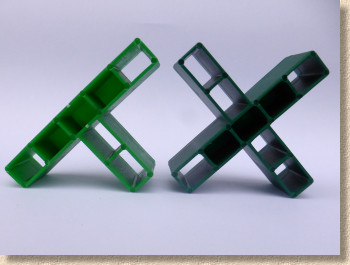
Video:
Further Info:

Resigap Ltd.
Resiblock House
Archers Fields Close
Basildon
Essex
SS13 1DW
United Kingdom

Tel: +44 (0) 1799 586686



